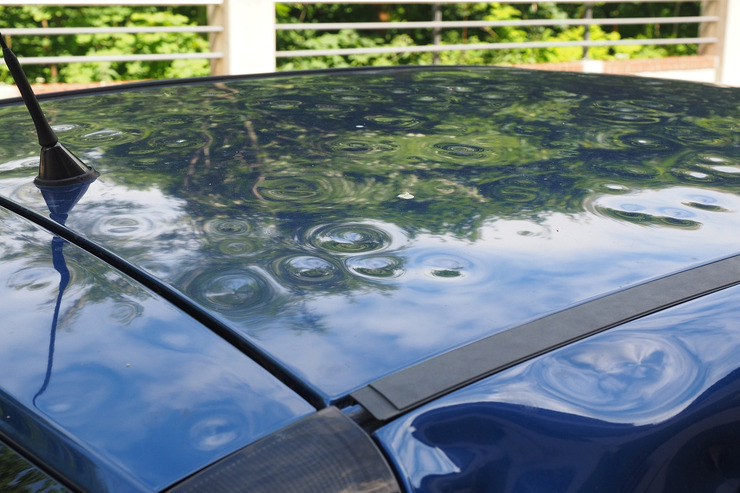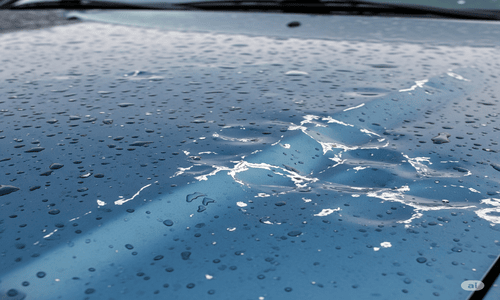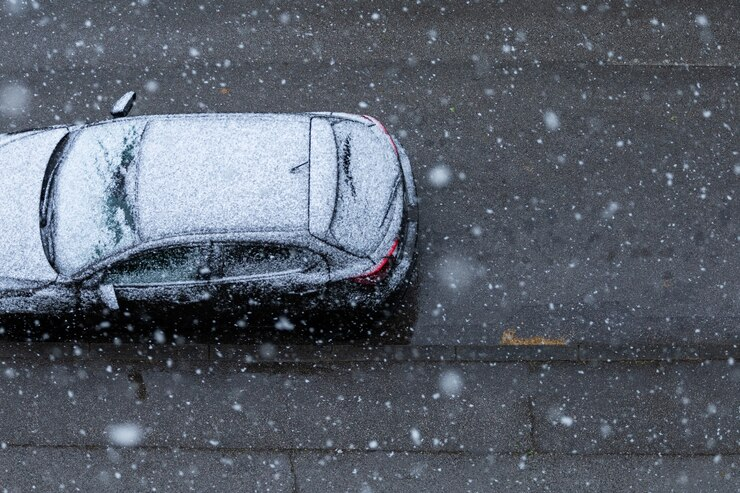From Minor Dents to Major Damage: 6 Types of Hail Damage to Cars

Aluminum Body Repair: Why It Requires a Specialist?
October 17, 2024
How Much Does Hail Damage Devalue a Car? Understanding the Impact
November 26, 2024Hailstorms can cause billions of dollars in damage annually. When considering the damage it can do to your vehicle, be prepared for anything, from small, barely noticeable dings to severe structural issues that could compromise safety and value. As a car owner, understanding the various types of hail damage can help you better navigate the situation.
If you’re curious about how hail can damage a car, this blog explores all that and more. We’ll discuss the different types of hail damage, some common hail damage car repair techniques, and the importance of seeking the help of certified repair specialists.
Common Types of Hail Damage
Any type of damage to your car can be overwhelming to look at. Unfortunately, if you’ve experienced a hailstorm, the countless dents can make it even more distressing. From minor dings scattered across the surface to deeper, more significant impacts, hail can leave your vehicle looking far from its best.
So, can hail damage be repaired? The good news is yes. Here’s a list of ways hail can damage your car and typical ways technicians can fix them.
1. Minor Dents
If you’re lucky, you’ll walk away from a hailstorm with just a few minor dents from hail. These small dings are typically caused by hailstones that measure less than one inch in diameter. The damage is often localized and doesn’t usually affect the vehicle’s paint or underlying structure. However, even though you may be tempted to ignore these seemingly minor dents, they can reduce the car’s value, especially if left unrepaired.
Minor hail damage to car panels can often be fixed using paintless dent repair (PDR). This process involves massaging the dent out from the underside of the car panel without the need for paint or fillers. PDR is particularly effective for minor dents. It’s the preferred choice of most hail dents repair specialists since it maintains the original finish of the car.
2. Chipped Paint
When hailstones strike a vehicle with enough force, they can chip away at the paint. These chips not only ruin the car’s aesthetic but also expose the metal or aluminum body to potential rust and corrosion over time. Damage like this is more than just a cosmetic issue; if left untreated, it can result in more extensive damage that requires costly repairs.
Addressing cracked paint often requires a combination of bodywork and repainting. This can become challenging, especially aluminum body repair for hail damage in newer model cars, as precise techniques and skills are needed to ensure a seamless finish.
3. Windshield and Glass Damage

Source: Freepik
Hailstorms don’t just affect the car’s body – they can also shatter or crack glass components. Large hailstones, particularly those over one inch in diameter, can cause extensive damage to windshields, windows, mirrors, and sunroofs. In extreme cases, the force of an impact can even break the glass.
Repairing or replacing a windshield or window can be inconvenient, often requiring time and effort to schedule an appointment, drop off your vehicle, and wait for the work to be completed. However, a certified repair shop can help expedite the repair process. More importantly, they encourage the use of only factory-grade materials, ensuring neither the safety of the vehicle nor the durability of the parts are compromised.
4. Damaged Car Panels
Hailstones larger than one inch can cause more severe damage to a car’s exterior, especially to larger components such as the hood, roof, and doors. Extensive hail damage to car panels can include large dents and cracked paint, compromising a vehicle’s appearance and structural integrity. Depending on the severity of the impact, the damaged panels may need extensive bodywork or replacement.
For major hail damage, technicians might need to use traditional methods to repair the panels by filling, sanding, and repainting the affected area to restore it to its original condition. This type of repair can be more time-consuming and costly than PDR, particularly if multiple panels are affected.
5. Roof and Hood Damage

Source: Pixabay
The roof and hood of a car are often the most exposed areas during a hailstorm, making them prime targets for damage. Hail damage to car panels in these areas can vary from minor dings to severe dents, depending on the size of the hailstones. If the hailstorm has compromised the structural integrity of the roof or hood, it may need to be replaced.
Repairing aluminum body panels on the roof or hood depends on the extent of the damage. If the surface is peppered with shallow dents, a hail dents repair specialist may use specialized PDR equipment to remove the dents. However, deeper dents with cracked paint will require more thorough repairs.
6. Damaged Trim and Molding
In addition to damaging body panels and glass, hail can affect a car’s trim and molding. This includes components like the door trim and window seals. Though these parts are often made from durable materials, large hailstones can still cause dents or cracks.
Fortunately, repairing trim and molding is generally more straightforward than repairing body panels. In most cases, minor dents and cracks can be fixed rather quickly. But if the parts are severely damaged, they may need to be replaced by a professional. They can ensure the parts fit correctly, maintaining their functionality and the car’s appearance.
Certified Hail Damage Repair Shop – The Key to Immaculate Repairs

Source: Freepik
A certified hail damage repair specialist can ensure your vehicle receives the highest quality care after a hailstorm. Since these technicians have undergone rigorous training, they possess advanced skills in repairing a car damaged by hail, from minor dents to severe damage. Additionally, they are adept at using various techniques like paintless dent repair (PDR) and traditional bodywork methods.
Whether your car has aluminum panels or a standard steel body, a certified technician is equipped to handle the complexities of hail damage auto body repair with precision. For instance, repairing aluminum body panels after hail requires specialized techniques and expertise, as aluminum is more challenging to work with than traditional steel. Moreover, the technicians must be able to restore the vehicle to its original form without compromising safety, performance, or aesthetics.
Repair Your Hail Damaged Car
Understanding the types of hail damage can help you navigate the repair process with confidence. More importantly, it can make it easier to file insurance claims and get your car on the road to recovery.
But all of that can get overwhelming, even for those who have experienced hail damage before. That’s why you need us. At Rapid Auto Hail Repair, we can help get your car repaired and file your hail damage insurance claims, from providing the necessary documentation and repairs to ensuring you’re reimbursed fairly. Talk to one of our consultants today.




